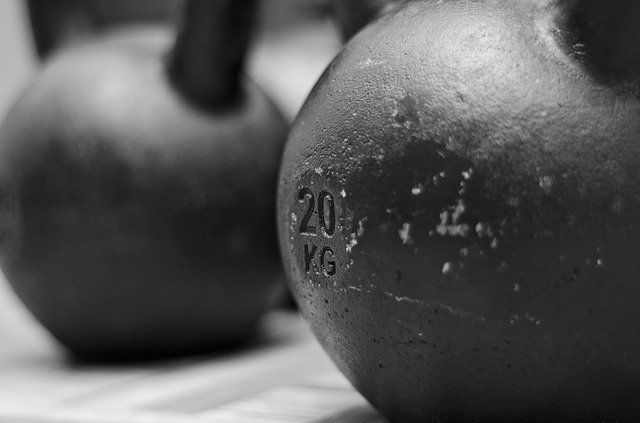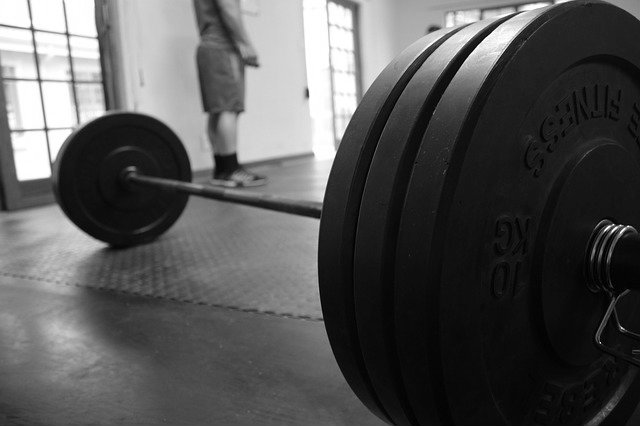 Reading Time: 8 minutes
Reading Time: 8 minutesThe Pareto principle, or the 80-20 rule, states that 80% of your results will come from 20% of your efforts. In other words, your most important task will yield nearly all of your results. This principle is often emphasized in the business and sales world, but it also applies to training and fitness.
A lot of training programs contain unnecessary fluff, likely stemming from the “more is better” mindset. Today we’re going to flip the focus to the 20% that actually works – the exercises and movements that give you the biggest return on time invested.
Why You Need Strength Training
Before we dive in, let’s talk about why we are strength training in the first place, or what the 80% of results we’re after looks like. Developing an understanding of the “why” behind your training will improve adherence as well as minimize the temptation to switch to other training regimens.
The most common “why” for most people is improved body composition. This is an awesome effect of training, and there’s nothing wrong with wanting to look better naked. Just be aware the benefits of strength training go far beyond the mirror:
- Improved bone mineral density – avoid osteoporosis and arthritis
- Age gracefully – improved skin, hormonal profile, and mental clarity
- Improved posture and mobility – less low back, neck, and hip pain associated with poor posture
- Improved insulin sensitivity, testosterone-to-estrogen ratio, HDL levels
- Minimize risk of illnesses like type 2 diabetes, Alzheimer’s, and cardiovascular
- Improved muscle-to-fat ratio
- Improved confidence and sense of self-efficacy
And the list goes on. You may notice that all of the benefits above are intertwined in one way or another. That’s why we’re able to simplify the benefits even further into the three major desired outcomes of strength training, in order of occurrence:
- Improved physical capacity – This means things like mobility, stability, strength, and aerobic capacity. A great strength training program empowers you to move better, reduce risk of injury, and train harder over time.
- Improved body composition – Progressively increasing training intensity over time, in most cases, leads to improvements in body composition and the associated mental benefits.
- Improved health markers and reduced risk of chronic illness – Improvements in physical performance, body composition, and self-efficacy normally precede a cascade of health benefits and reduced risk of illness.
At the end of the day, the 80% most of us are after is pretty simple. We want to look, feel, perform, and live better. That’s it. So how can we manipulate our training to match our goals in a way that doesn’t take all day to accomplish? Let’s take a look.
A Simpler, Yet Effective Method
It’s common for strength training programs to be split into specific body parts like chest, back, arms, or legs. There is nothing wrong with this approach, and it’s effective for those who have the time to dedicate each week. The main issue with a body part split presents itself in the form of accessory exercises. Chest flyes, bicep curls, and leg extensions all have their place in a strength-training program, but I’d consider them part of the unnecessary fluff for the average people. Remember, we’re after the 20% of movements that give us the biggest bang for our buck. And notice: I said movements, not exercises.
Thinking in movement patterns – like push, squat, or pull – instead of individual exercises makes exercise selection much easier. Movement patterns allow you to stop stressing over which form of bench press to include in your training, or the pros and cons of back squats versus front squats. If your goal is simply to improve health, improve body composition, and feel better, the type of squat or press you perform won’t matter all that much. The best exercise is the one you’ll be able to perform consistently and progress over time.
Just to reiterate, this method is only for you if:
- You are not concerned with becoming an elite athlete, lifting as much weight as possible, or being ripped to shreds.
- You want to spend less time in the gym or training.
- You are okay with having fun with your training and don’t need a rigid training program (though you could turn it into one).
- You believe training should enhance your life, not consume it or add stress.
Movements and Exercises
Below are the six basic movement patterns that address all of the goals we’ve talked about. Beside each movement you will find examples of recommended exercises with video links. These recommendations take into account that you may be training at home, therefore many are bodyweight or only require kettlebells or dumbbells.
Keeping the theme of “biggest bang for your buck” alive, the exercises are all compound or multi-joint exercises. Compound exercises maximize your time by working many muscles at once, instead of isolating one muscle like in a bicep curl or shoulder fly.
- Squat – Goblet Squat, Sumo Squat
- Weighted Carry – Farmers Carry, Single-Arm Overhead Carry
- Push – Push Up, Floor Press (advanced), Overhead Press, Single-Arm Overhead Press
- Pull – Bent Over Row, Renegade Row, TRX Row, Inverted Row
- Hinge – Deadlift, Stiff Leg Deadlift, Kettlebell Swing
- Lunge – Goblet Lunge, Walking Lunge, Split Squat (advanced)
How to Program With Movement Patterns
This is where the beauty of this training style reveals itself. Because you’re not beating your body up with hour-long training sessions for each body part, you are able to train more frequently without recovery concerns.
You could, and probably should, do a squat movement every day. Not only is a squat a great movement for the sake of training, it also loosens and restores function to our chronically tight hips, a common cause for back pain and other issues.
Whether you squat every day or not, performing some form of movement daily is a must. When deciding what to do each day, keep your program design as simple as possible, especially when starting out. Program design could be as straightforward as choosing one or two exercises from each movement and performing them in a circuit or using time intervals.
Your goals will undoubtedly change over time, and your training program should change accordingly. You will find a bit more on program design below, but if you take one thing away from this section, let it be this – a combination of moving fast from time to time, moving progressively heavier objects, and moving often is the ultimate recipe for success.
How to Train Toward Hypertrophy vs Strength
The weight used for each exercise will depend on your working time, rep count, and ability level. In a circuit-style workout, weights should be moderate enough to avoid muscle failure, yet challenging enough to achieve an effective training session. On the other hand, if you were training for strength or hypertrophy (building muscle), you would want to choose a weight that takes you close or all the way to muscle failure. Regardless of the weight you start with, always aim to progress to a heavier weight or increased reps with the same weight over time.
Once you embark on a strength training journey, there’s a good chance you will want to improve strength or skill in one particular movement or exercise. The best rep range for hypertrophy has been shown to be 8-12 reps, whereas if you’re wanting to get a bit stronger, 4-6 reps is the sweet spot. Consequently, hypertrophy can be attained through circuit training where training for increased strength needs to be at a slower pace with adequate rest between sets.
Examples of Full-Body Strength Workouts
Interval Style:
2 rounds – 40 seconds working/20 seconds rest
- Goblet squat
- Farmers carry
- Push up
- Bent over row (20 seconds per side)
- Kettlebell swing
- Walking lunge
Rounds Style:
3 rounds – 15/12/9 (reps)
- Sumo squat
- Overhead press
- Split squat (do the full number of prescribed reps on each leg)
- Renegade row (do the full number of prescribed reps on each arm)
- Stiff leg deadlift
- Farmers carry
Both examples could be adjusted for time constraints, injury, or equipment limitations. You could take a round off to save time, leave out pressing in the presence of shoulder pain, or leave out weighted carries if space is an issue.
Examples of Skill-Focused Workouts
Workout #1:
- 5 Pull Ups – 10 Minute EMOM (every minute on the minute) +
- Kettlebell Overhead Press – 3 sets of 12 reps
Workout #2:
- 25 Kettlebell Swings – 10 rounds
Workout #3:
- Heavy Goblet Squat – 5 sets of 5 reps +
- Push Ups – 5 sets of 15 reps+
All of these would provide a tough, time-efficient workout to improve one movement. As you can see, this method of programming gives you a ton of freedom to make training both challenging and fun.
Final Takeaways
- Making progress over time is the key to avoiding boredom and plateaus by providing new challenges both mentally and physically. Progression could be as simple as lifting heavier weight for the same rep count or improving completion time in a for-time workout.
- For most, squatting and hinging are the two least favorite movements and consequently the most important – include them often.
- Make it easy on yourself. If you have trouble making it to the gym, buying a few pieces of affordable equipment for home could be your answer to more frequent workouts.
- The more you do it, the more you do it. Think about how difficult it is to become active again after a stint of inactivity. The same is true for remaining active. Once training becomes a part of daily life, it’s hard to skip sessions.
- Always have fun. As soon as training becomes stagnant or boring, change things up with new exercises, rep schemes, or workout formats. Also, having a partner or accountabilibuddy makes training more fun and decreases the likelihood of missed training sessions.







